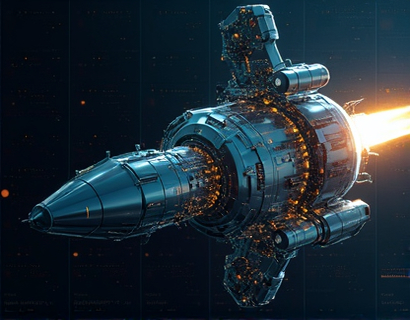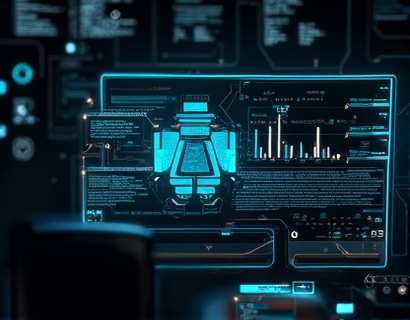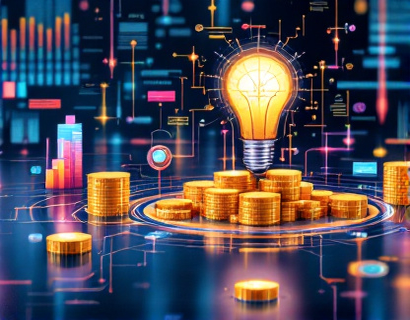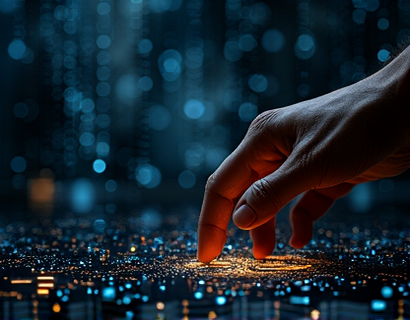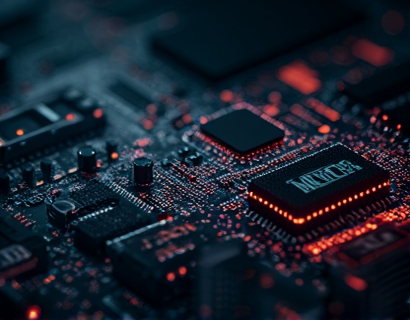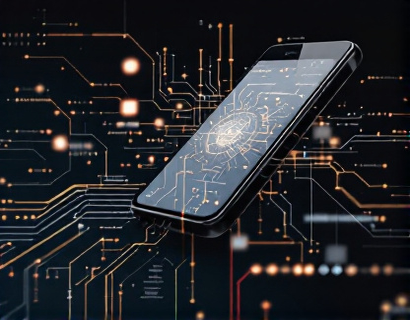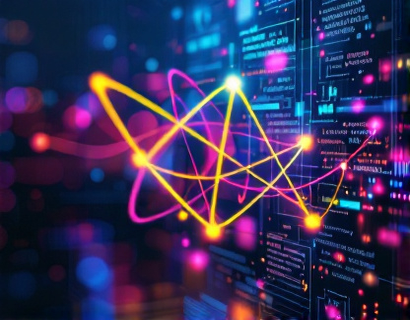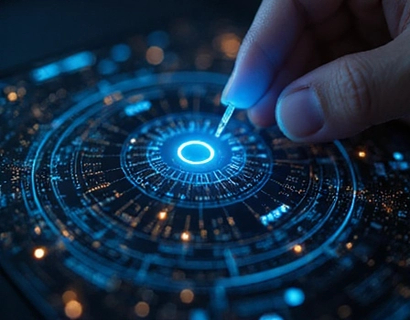Decentralized Innovation: Unlocking Next-Gen Digital Transformation with AI and Crypto Synergy
The digital landscape is undergoing a profound transformation, driven by the convergence of artificial intelligence (AI) and decentralized technologies, particularly cryptocurrencies. This synergy is giving rise to decentralized innovation, a paradigm shift that promises to redefine how we interact with digital services and applications. For tech-savvy innovators and early adopters, understanding this synergy is crucial to harnessing the full potential of the next generation of digital solutions.
Decentralized innovation leverages the strengths of both AI and decentralized systems to create more resilient, transparent, and user-centric digital ecosystems. AI brings intelligent automation and advanced data analysis, while decentralized technologies ensure security, privacy, and decentralization of control. Together, they pave the way for a new era of digital transformation, one that is not only technologically advanced but also democratized.
Understanding Decentralized Technologies
Decentralized technologies, often associated with blockchain, are foundational to this new digital paradigm. Blockchain is a distributed ledger technology that records transactions across multiple computers in a way that is secure, transparent, and tamper-proof. This technology underpins cryptocurrencies, which are digital or virtual currencies secured by cryptography and operated independently of central banks.
Beyond cryptocurrencies, blockchain and related decentralized technologies offer a range of applications, from supply chain management to identity verification. The key advantage of decentralized systems is their ability to operate without a central authority, reducing the risk of single points of failure and enhancing trust among participants. This decentralization is particularly appealing in an era where data privacy and security are paramount.
AI: The Brain Behind the Innovation
Artificial intelligence, on the other hand, is revolutionizing the way we process and analyze data. AI algorithms can learn from vast amounts of data, identify patterns, and make predictions or decisions with minimal human intervention. In the context of decentralized innovation, AI serves as the brain, providing the intelligence needed to manage and optimize decentralized systems.
For instance, AI can enhance the efficiency of blockchain networks by optimizing transaction processing, reducing energy consumption, and improving scalability. Machine learning models can also be used to detect and prevent fraudulent activities, ensuring the integrity of decentralized applications. The combination of AI and decentralized technologies creates a powerful toolset for building robust and intelligent digital ecosystems.
Synergy Between AI and Decentralization
The true power of decentralized innovation emerges from the synergy between AI and decentralization. Decentralized systems provide the infrastructure for trustless and secure interactions, while AI brings the intelligence to manage and enhance these interactions. This synergy leads to the development of decentralized applications (dApps) that are not only secure and transparent but also intelligent and adaptive.
One of the key areas where this synergy is making a significant impact is in the finance sector, particularly with the rise of decentralized finance (DeFi). DeFi platforms use blockchain to offer financial services such as lending, borrowing, and trading without intermediaries. AI algorithms can optimize these processes, providing better risk management, personalized financial advice, and more efficient market operations.
Enhancing User Experience through Decentralized Innovation
The integration of AI and decentralized technologies is not just about backend efficiency; it also significantly enhances user experience. Decentralized applications can offer greater control and ownership to users, as they have direct access to their data and assets without relying on centralized entities. AI-driven interfaces can provide personalized experiences, adapting to user preferences and behaviors in real-time.
Moreover, the transparency of blockchain ensures that users can verify transactions and interactions, building trust and confidence in the system. This level of transparency is particularly valuable in industries where trust is critical, such as healthcare, supply chain, and voting systems. By combining AI's analytical capabilities with the trustless nature of decentralized systems, users can enjoy a more secure, efficient, and personalized digital experience.
Case Studies of Decentralized Innovation
Several projects and platforms are already demonstrating the potential of decentralized innovation driven by AI and cryptocurrency. One notable example is Uniswap, a decentralized exchange (DEX) that allows users to trade cryptocurrencies directly without intermediaries. Uniswap uses AI to optimize liquidity pools and trading algorithms, ensuring smooth and efficient transactions.
Another example is Augur, a decentralized prediction market platform that leverages AI to predict future events with high accuracy. Users can create and bet on predictions, with the platform using AI to manage the market and ensure fair outcomes. This combination of decentralization and AI not only enhances the accuracy of predictions but also democratizes access to market insights.
Challenges and Considerations
While the potential of decentralized innovation is vast, there are several challenges and considerations that need to be addressed. One of the primary challenges is scalability. Blockchain networks, particularly those using proof-of-work consensus mechanisms, can struggle with high transaction volumes and slow processing times. AI can help mitigate this by optimizing network operations and developing more efficient consensus algorithms.
Another challenge is regulatory uncertainty. The intersection of AI, cryptocurrency, and decentralized technologies operates in a relatively uncharted legal space, leading to varying regulations across different jurisdictions. Stakeholders must navigate these regulations carefully to ensure compliance and foster innovation.
Additionally, there is a need for greater user education. The complexity of decentralized systems and AI technologies can be daunting for many users. Providing intuitive interfaces and comprehensive educational resources is essential to broaden adoption and ensure that the benefits of decentralized innovation are accessible to a wider audience.
Future Prospects
The future of decentralized innovation is bright, with ongoing advancements in AI and blockchain technology poised to unlock new possibilities. As AI algorithms become more sophisticated, they will continue to enhance the functionality and efficiency of decentralized systems. The development of more scalable and energy-efficient blockchain solutions will further support the growth of decentralized applications.
Moreover, the integration of other emerging technologies, such as the Internet of Things (IoT) and 5G, will create a more interconnected and intelligent digital world. Decentralized innovation will play a pivotal role in this ecosystem, ensuring that the benefits of these technologies are distributed equitably and securely.
In conclusion, the synergy between AI and decentralized technologies is driving a new wave of digital transformation. By leveraging the strengths of both, we can build more resilient, transparent, and user-centric digital ecosystems. For tech enthusiasts and early adopters, embracing this synergy is key to staying ahead in the rapidly evolving digital landscape.



